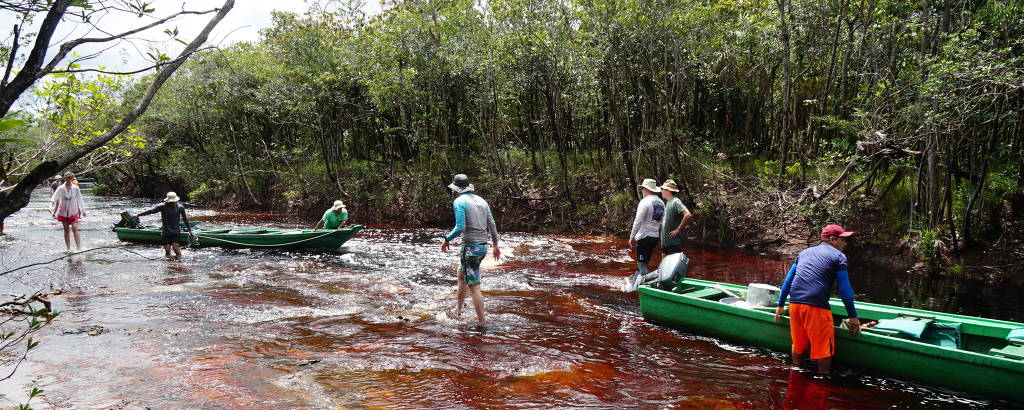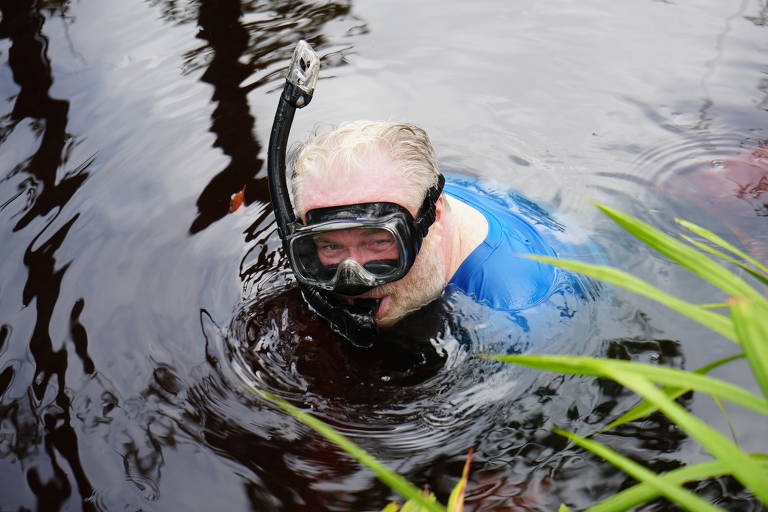Scott Dowd, 52, is always the first to dive in and the last to get out of the brooks and lakes around Rio Negro river basin, in the Amazon. His passion for piabas (a local word for ornamental fish) is second only to his conviction that the Amazonian piabeiros (ornamental fish farmers) will be able to keep in living off their trade.
Dowd, a Massachusetts-based biologist, has a few tools to accomplish his goal: the slogan "buy a fish and save a tree," a documentary film and what he says it's the first living being in the world to have a certification of sustainable origin.
It's also possible that his product is the smallest ever recognized by the Brazilian Institute of Intellectual Property. It's the cardinal tetra (Paracheirodon axelrodi), a little fish around one inch long, that mesmerizes aquarium owners from all over the world with its iridescent tones of red and blue.
Dowd's initiative, called Projeto Piaba, happens between Boston, where he is a conservation biologist at the New England Aquarium, and the "aquarium fish capital of Brazil," a town in the state of Amazons called Barcelos, 3,7000 miles away. He first went to Barcelos 16 years ago, when he was collecting data for his Master's degree.
He now returns there every year, leading a couple of dozen foreigners, usually from the US, on a boat journey to the rivers and brooks around Barcelos. They usually depart from Manaus, and the expedition has been nicknamed "Gringo Doido" (Crazy Gringo), due to the participants' enthusiasm for the aquarium fishes native to the region.
Piaba fishing has been declining for years in the forests flooded by the Rio Negro basin. During the second half of the 20th century, an average of 20 million ornamental fish was exported from the Rio Negro every year. In 2018, the number was a little over 3 million, which generated R$ 5.4 million (US$ 1.45 million) in revenue.
The competition with Colombia, where shipping is less expensive, or the companies that farm the cardinalfish in Florida and Asia got tough. And let's not forget the red tape: Brazil requires no less than seven documents to allow even one fish from the 700 species cleared for exportation to leave the country.
Another issue is the Brazilian fishes high mortality rate of 20%, caused by the highly stressing travel conditions they are subjected to.
Projeto Piaba works in several fronts to improve the quality and value of the tiny aquarium fishes from the Rio Negro. One of them is improving their general health so that they can withstand the stressful conditions of transport.
The reporter traveled from Manaus to Barcelos (AM) as a guest of Projeto Piaba.
Translated by NATASHA MADOV

